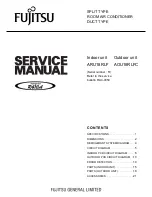
1 ______.
Figure #1
Installation
Safety Product Inspection of Fan Prior to
Installation (Figure #1 and #2)
I
A
WARNING
I
To reduce_ t�e risk of
�-----'
personal m1ury, do not
bend the blade brackets when installing the
brackets, balancing the blades or cleaning the
fan. Do not insert foreign objects in between
rotating fan blades.
1. Make certain set screw (4) is tight to
ascertain wobble free operation.
2. Make certain cotter pin (5) is in place
and secure.
3. Make certain lock-nut (7) is tight and
set screw (6) is in place and secure.
4. Slide lower canopy (8) down over rub
ber gasket (21) to create a tight seal.
5. Make certain lower canopy set screws
(2) are tight on down rod (1).
6. Make certain cotter pin (13) is in place
and secure.
7. Make certain bolt, cotter pin and nut
(16) are tight.
Hanging of Fan (Figure #1 and #2)
Wind one nut (9) down to bottom of
J hook (12) towards the curve. Add a
lock washer and then flat washer (3)
on top of the nut (9).
IA
WARNING
I Make certain crimp on
�-----'
safety loop is secure (See
Figure #4). Make certain safety cable is
attached properly
to
hook or structural
member. Failure to comply with instruc
tions could result in personal injury and/
or property damage.
2. Drill a 5/32" pilot hole for safety hook
(31) within a 12" radius of J hook
(12) support for fan. Wind one nut
(29) down to bottom of safety hook
towards the loop. Add a lock washer
(29) and slide safety hook through
30
31
,,
...
Figure #2
pilot hole. Slide lock washer (30) on
top side of the safety hook and add
nut (30). Tighten so lock washer on
top and bottom of the structure are
secure.
3. Drill a 1/2" pilot hole for J hook. Put J
hook (12) through pilot hole in joist.
Add flat washer and then lock washer
(20) and nut (22). Do not tighten
completely until fan is put in place on
J hook. A lubricant should not be used
on the single mounting screw; and
the pilot hole should be drilled no
larger than the minor diameter of the
mounting screw threads, and at least
38 mm (1-1/2") of the threaded part
of the mounting screw should be
secured into a structural joist to
provide secure mounting.
4. Loosen set screw (18) on top canopy
(19) on fan down rod (1) and lower
the canopy to make room to place
rubber grommet (14) onto mounting
hook.
5. Tighten top nut (22) on J hook to
raise fan into proper installation
position.
6. Ensure power to outlet box is off
before hooking up wiring (10). Wire
the fan according to NEC, CEC and
local electrical codes (see Figure #5 or
6). After making the wire connections
as outlined in Figure #5, the wires
should be spread apart with the
grounded conductor and the
equipment-grounding conductor on
one side of the outlet box and the
ungrounded conductor on the other
side of the outlet box. Splices should
2
Figure #4
be turned upward and pushed care
fully up into the outlet box.
7. Raise top canopy (19) up the
down rod to cover hook. Leave 1/8"
gap between top canopy (19) and
hanging surface (so down rod does
not move off center which could
make fan wobble or vibrate and
transmit motor noise to ceiling
surface). Tighten set screw (18).
8. Attach blades (23) to motor (24)
with blade bolts (25). (Figure #3) The
blade (24) should be positioned
below the blade arm bracket (26)
when attaching to the motor to get
proper air flow and direction.
Wall Control Installation
The wall control switch has been
investigated and found acceptable for
use as a speed control switch.
1. Connect the fan supply (black) wire to
the black wire from wall control as
shown in Figure #5.
2. Connect the neutral fan (white) wire
to the white neutral household wire.
3. Connect the two green fan ground
wires located on the down rod and
hanger bracket, to the household
ground wire.
4. After connecting the wires, spread
them apart so the green and white
wires are on one side of the outlet
box and the black wire is on the other
side.
5. Turn the wire connecting nuts upward
and push the wiring into the outlet
box.
Note: (28) references an existing or
customer supplied junction box.























